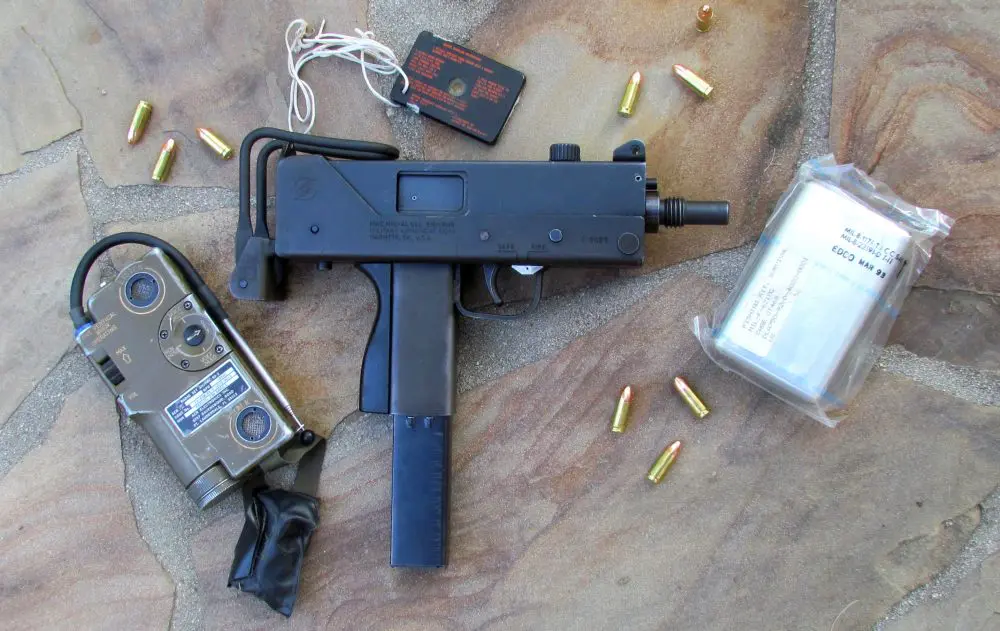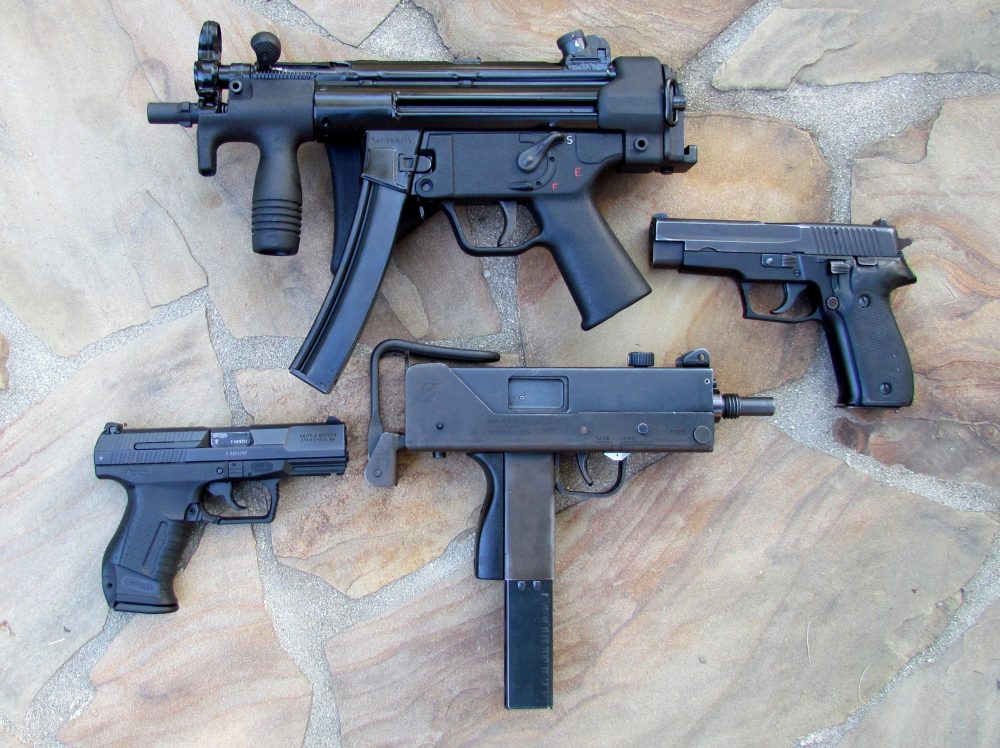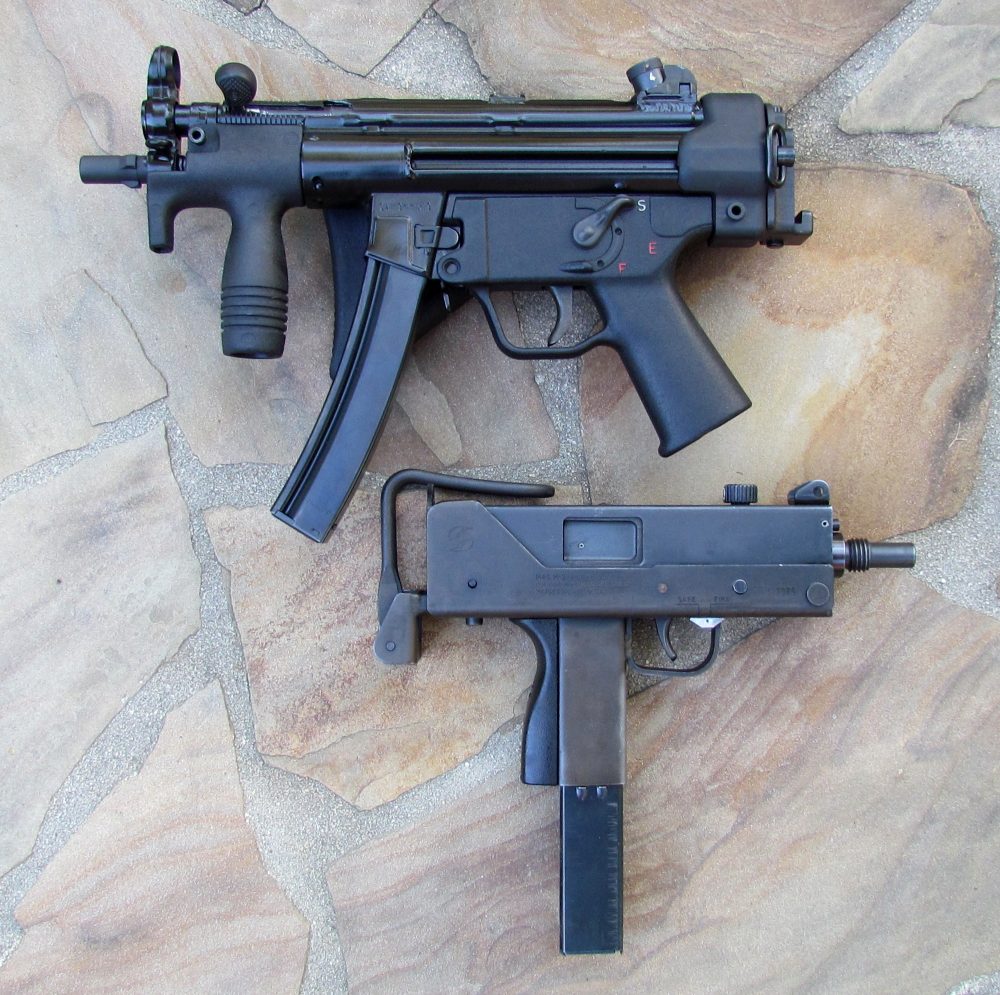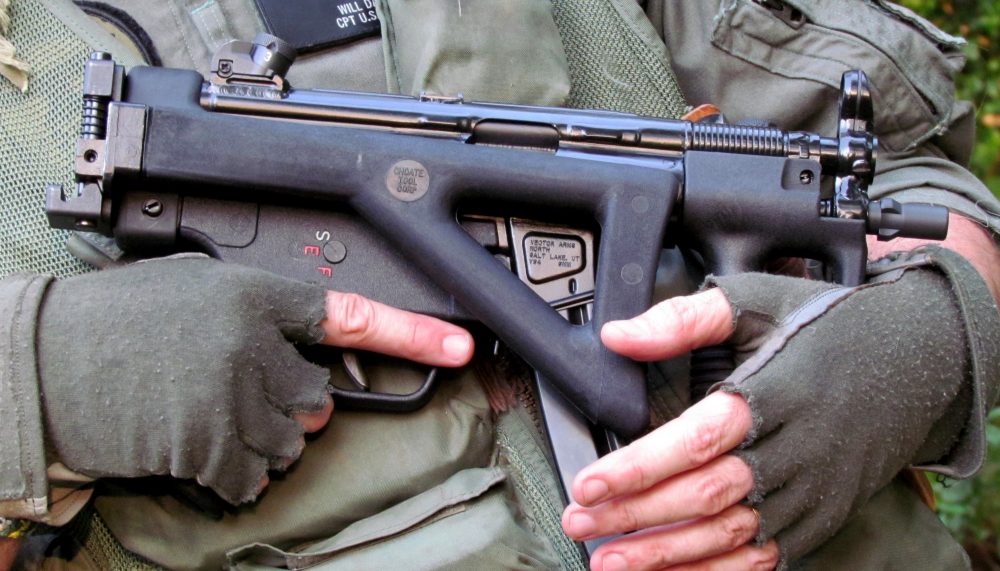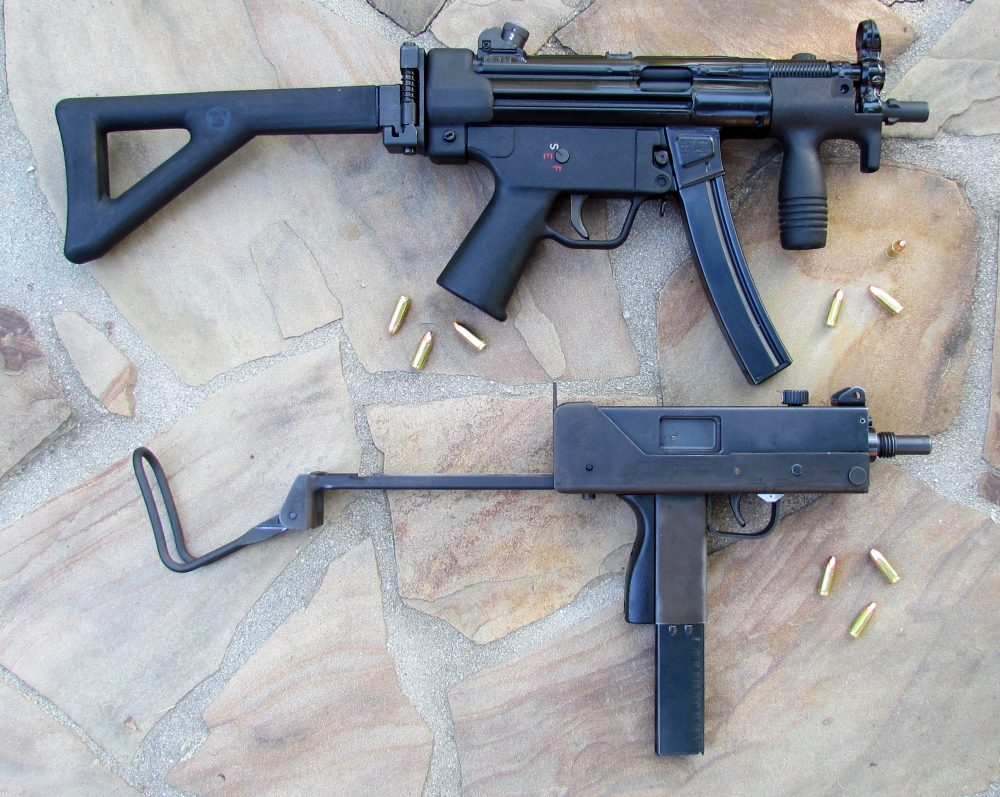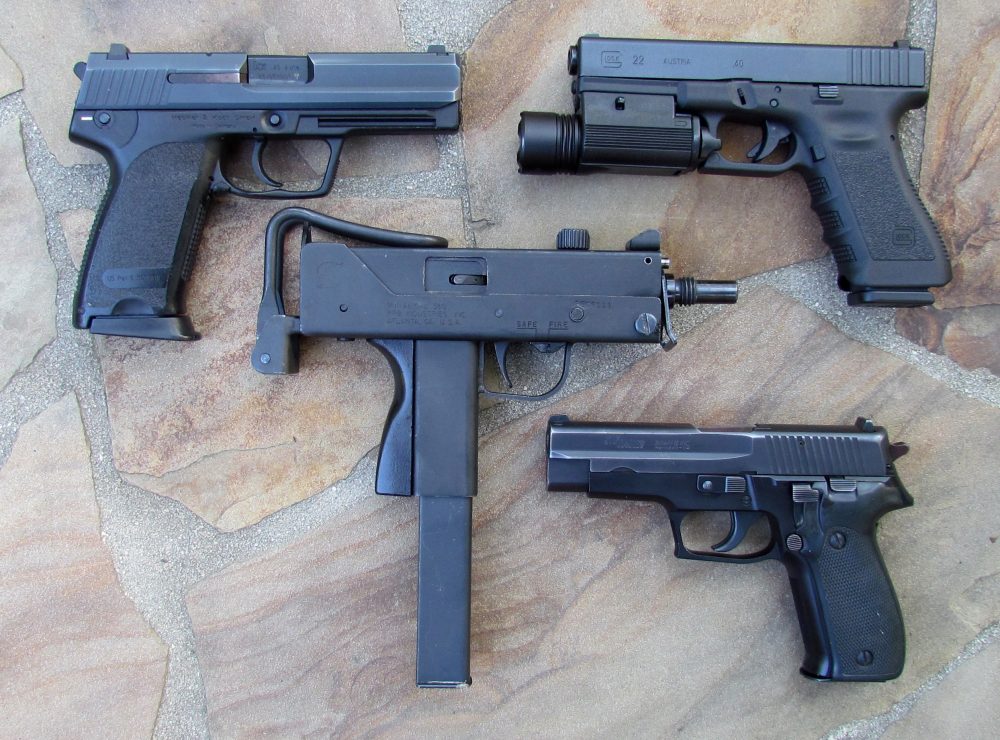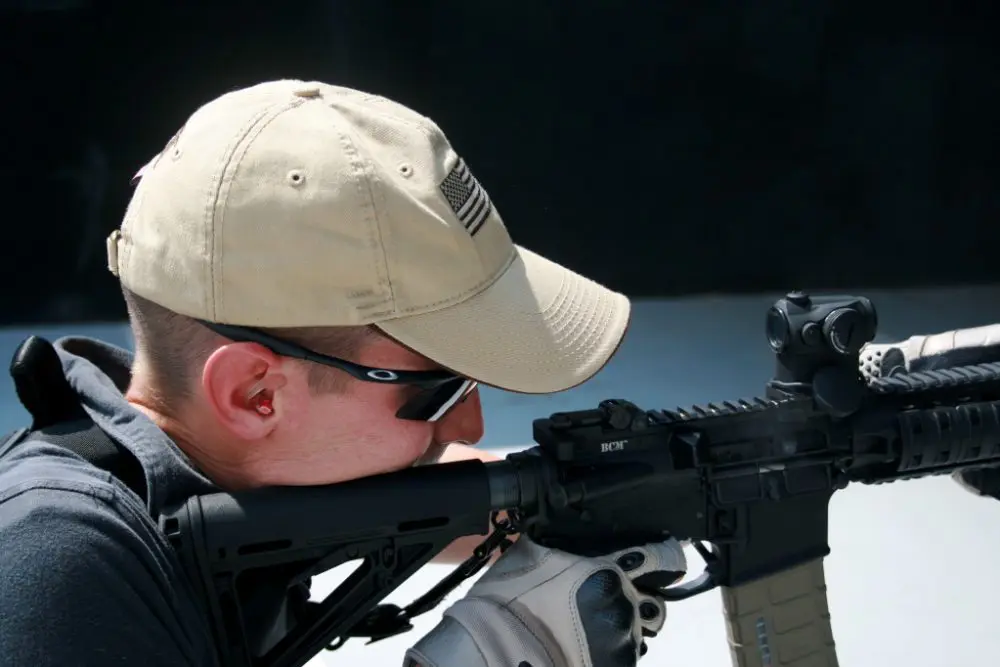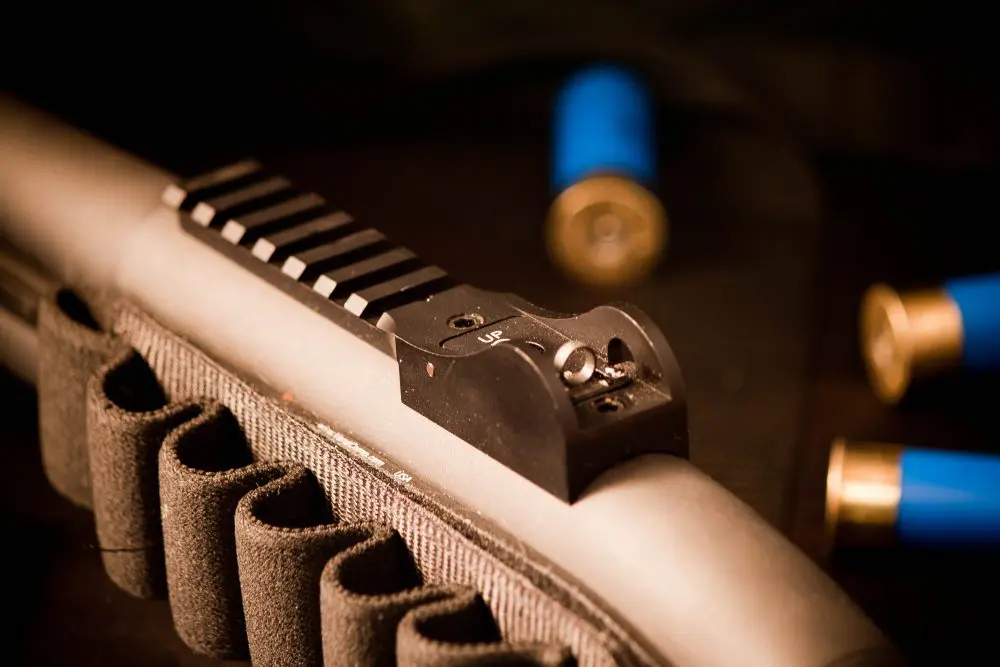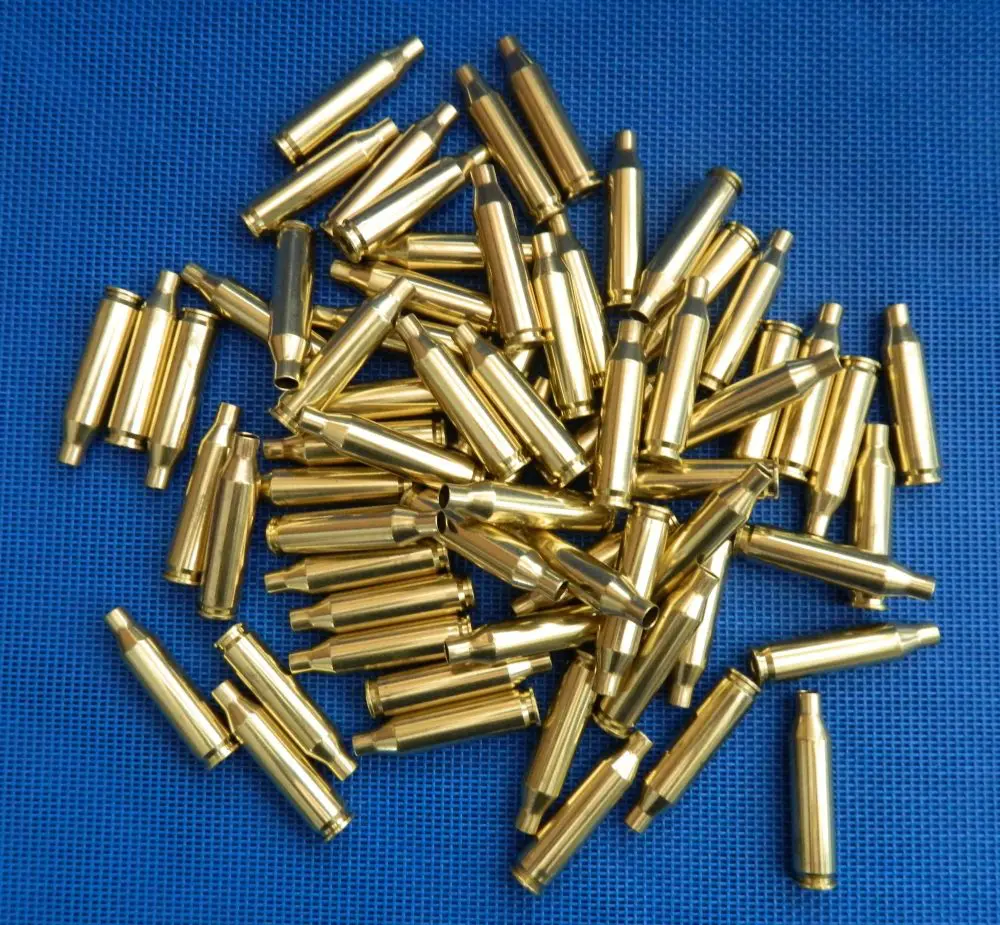
Back in the 1970s and early 1980s, there was a niche arms race to see who could produce the smallest practical submachine gun. The Czech VZ-61 Skorpion and Russian Stetchkin machine pistol led the charge on the dark side of the Iron Curtain. Efforts on the side of freedom included the HK MP5K-PDW and the MAC series of buzzguns designed by Gordon Ingram.
Table of Contents
BIG MAC ATTACK
Military Armament Corporation produced the little MAC submachine guns in three calibers: .380 ACP, 9mm and .45 ACP. Incorporating the telescoping bolt design originally birthed in the Czechoslovakian CK 476 and then perfected in the Israeli Uzi, they were almost comically small.
The M-10 typically feeds from a double-column 30- or 32-round magazine. The magazines feed through the pistol grip, making reloading in the dark or on the move a fairly intuitive process. They fire from the open bolt and are designed with ease of manufacture in mind. The majority of the gun is comprised of sheet steel stampings with the exception of the bolt, barrel, and sundry small parts.
Back in the day, there was actually a concerted push to sell the U.S. Army on the MAC submachine gun as a replacement for the 1911 Colt .45 pistol. Wouldn’t that have been interesting?
MAC submachine guns are almost comically compact. Were it not for the bizarre regulations governing civilian ownership of automatic weapons in the U.S., these ubiquitous weapons would be little more than historical footnotes.
The M-10’s stock all but disappears when folded, but it’s wobbly and requires a couple of operations to deploy. The safety is a sliding switch in front of the trigger guard and is technically ambidextrous. The fire selector is easily accessible to the left thumb for right-handed shooters and pivots through 180 degrees. The charging handle reciprocates with the bolt and can be rotated 90 degrees to lock the bolt closed as an additional safety device. The MAC incorporates a fixed firing pin in its bolt face.
The MACs were a breeze to build, fairly reliable in action, and as compact as could be hoped for given the limitations of their chamberings. But the diminutive mass of the bolts, as well as the compact bolt travel, equaled a fairly astounding rate of fire. My 9mm M-10 runs at around 1,200 rounds per minute with standard ball ammo. My M-11 (.380 ACP) is closer to 1600.
When introduced, MAC-10 and MP5K-PDW were envisioned as more efficient and effective replacements for handguns in certain tactical applications.
THE TEUTONIC SOLUTION
While examples can be found of German weapons utilizing most every locking system imaginable, the pinnacle of their submachine gun design was embodied in the Machinenpistole 5 and its delayed roller-locking operating system.
Based on the MG-42 general-purpose belt-fed machine gun, the MP5 was originally known as the HK-54. Locking is undertaken via a pair of roller bearings that are pressed out into recesses milled into the chamber area to keep the bolt and barrel locked together long enough for chamber pressures to drop to safe levels for extraction.
While the MP5 receiver is also made from steel pressings, the internals are more refined than are those of the MAC guns. The MP5 fires from the closed bolt position.
HK MP5K-PDW is a markedly more elegant firepower solution than the MAC series of guns.
The MP5 typically feeds from a 30-round curved magazine, though straight stick mags as well as 15-round magazines and even 100-round drums exist. There is no last-round bolt hold open on standard MP5s, so reloading involves locking the bolt to the rear over an empty chamber, inserting a new magazine, and then releasing the bolt handle.
HK’s entry into the micro submachine gun arena was the MP5K-PDW (Personal Defense Weapon). This weapon was designed to serve as a sidearm for truck drivers, artillerymen, aviators, and other soldiers whose jobs were not necessarily focused on direct contact with the enemy. There was even a holster produced that carried the weapon low on the right thigh in the manner of a handgun. Its cyclic rate hovers around 900 rounds per minute.
MP5K-PDW stock swings to the right and locks rigidly in place.
The MP5K-PDW charging handle does not reciprocate. It is located in the traditional HK location on the left front and is readily accessible for right-handed shooters. The rigid stock folds to the right when stowed. It is a bit bulky in this configuration, but lockup is tight. The PDW incorporated a rigid vertical foregrip before rigid vertical foregrips were cool.
If these guns were cars, the MAC would be a Ford Escort, while the MP5 would be a seven-series BMW. Both will get you where you want to go, but the latter in much more style.
With this in mind, we retired to the range with a crateload of ammo and these two little subguns to see how they ran side by side. We stuck with the 9mm MAC-10 so it would remain an apples-to-apples comparison.
MAKING A JOYFUL NOISE
There is a definite technique to shooting a small-platform automatic weapon well. Unlike longer, heavier automatic weapons, these guns are remarkably unforgiving. A moment’s inattention can literally spray bullets all over the countryside. But a trained and disciplined trigger finger can make even these tiny guns sing.
Both MAC-10 and MP5K-PDW employ collapsible stock systems to stabilize automatic fire from the shoulder.
With the wire stock deployed and proper technique, the M-10 can be fairly effective. Four- and five-round bursts are not too difficult. Recoil, even at those volumes, is not unmanageable. The operator must keep his body weight behind the gun to keep it properly controlled during burst firing, though some degree of dispersion is nevertheless inevitable. The gun is acceptably reliable with trivial maintenance. Without a muzzle attachment in place, these tiny guns will literally blow your fingers off if you lose your focus.
The MP5K-PDW is markedly more forgiving. The rigid foregrip and rock-solid buttstock make the HK a much more effective performer. Bursts from the German design were much tighter on the range.
Both guns require about the same amount of concentration to change magazines, though the MP5 must have the bolt dropped manually on each fresh mag. Sights on the MACs are quite crude, but as these weapons are designed for security work at bad-breath range, they are adequate.
MAC-11, .380 sibling of MAC-10, is ridiculously small. Tiny sub-gun is displayed alongside HK USP, SIG 226 and Glock 22.
THE FINAL ANALYSIS
We train differently for different missions now than we did 30 years ago. Body armor is more ubiquitous on the battlefield, and the explosion of electronic sights has transformed tactical shooting.
Rifle-caliber carbines have evolved to the point where they can fulfill the mission of the submachine gun but with markedly more horsepower. Additionally, the MAC guns were designed to be cheap to mass produce, whereas the MP5K-PDW spared no expense.
Having said all that, it is still impressive that there was a time when weapons manufacturers produced automatic weapons that could technically ride in your jacket pocket.
While these pint-sized buzzguns would be a liability to all but the most seasoned operators, for specific clandestine applications, there’s still nothing better out there. In a target-rich environment where the friendly density is low, 32 rounds in 1½ seconds mean not having to say you’re sorry.
